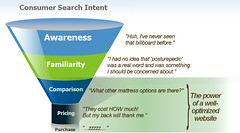There was once a time when you could “beat the system” when it came to search engine rankings. With a little knowledge of keyword density and back links and a $47 eBook, just about anyone could make money online.
It different today…..
[fusion_builder_container hundred_percent=”yes” overflow=”visible”][fusion_builder_row][fusion_builder_column type=”1_1″ background_position=”left top” background_color=”” border_size=”” border_color=”” border_style=”solid” spacing=”yes” background_image=”” background_repeat=”no-repeat” padding=”” margin_top=”0px” margin_bottom=”0px” class=”” id=”” animation_type=”” animation_speed=”0.3″ animation_direction=”left” hide_on_mobile=”no” center_content=”no” min_height=”none”]
Many of the tactics which used to work are now a certain recipe for losing visitors and gaining Google penalties. Unfortunately, many marketers learned this the hard way with the introduction of Google updates like the Panda and the Penguin.
Is your site next on the list for a one-way plummet to the bottom of the search rankings? Let’s look at the top five SEO “no-no’s” and find out…
#5: Over-optimization
The Penguin update made an example of over-optimized sites, and my guess is that if Google did this once, they’ll be doing it again soon. What does it mean to be “over-optimized?” I’d describe it as catering your design, structure or content more to search engine spiders than to human visitors.
For example, deliberately using keyword density or optimized content tags to gain a high search engine ranking instead of creating relevant and engaging content that readers want to read is over-optimization. These tactics used to work, and for some marketers they might still be working.
The question is whether you’re willing to gamble on the possibility that Google will never develop the technology to spot over-optimized sites and to penalize them.
#4: Spammy LinkBuilding
Spammy link building used to be the practice of linking to spam sites. But today, spammy link building is creating any links that have no real value or little to no chance of attracting relevant traffic. For example, profile link building is one of the most commonly abused forms of link building.
It’s done by creating a profile on a forum or social media site simply for the sake of leaving a back link to your site in the “users” profile.
A lot of companies that use profile link building offer the guarantee that they’ll replace your link free of charge if it gets deleted. But what many people don’t know is forums and Social Media sites automatically delete these “phantom accounts” after 60 to 90 days if there’s no activity.
So you’re building links that will soon be deleted and that have no chance of earning traffic. I also doubt that there’s any link building company that will keep checking on all your profile links and replacing them every 30 to 90 days free of charge.
#3: “Bait and Switch” Content
How many times have you done a Google search, chose a site where you thought you could find the answer to your question, only to find that the article just contained vague information? The only job of the content was to get you to the site, in hopes that you’d click an advertisement.
Most of the time, these sites are built simply for the sake of selling ad space. At other times, their content tells you nothing unless you opt in to an email list. You could also end up being redirected to another site which still doesn’t answer your question.
If you don’t deliver people what they expect when they land on your site, they won’t stick around long. They’ll hit the back button, and if this happens enough you’ll end up with high bounce rate and a low ranking.
This is also something that worked for a long time and it might keep working for a while. But as Google continues to refine their methods and reward sites which deliver relevant content, these tactics will stop working.
#2: Bad Site Structure
The internet is the world of instant gratification, and people expect to find what they want quickly and easily. So your site structure needs to be really, really simple and easy to navigate. This might sound obvious, but I could name 5 sites right now (popular ones) which are so poorly structured that I’ve actually had to leave the site and use the Google search bar to find one of the site’s pages.
This is extremely frustrating for new visitors, and it could hurt your bounce rate and ability to win repeat visits.
And finally, the #1 slot goes to….
#1: Review Syndication Impersonation
If you want a 100% certain path to banishment from Google (and possibly a $250,000 fine from the FTC), review syndication is the way to go. Unfortunately, there’s still a lot of confusion about the difference between syndication and review impersonation.
Many review syndication and reputation management companies offer to perform the following services:
- Re-purposing offline reviews (from comment cards etc) to be used as online reviews.
- Creating fake social media accounts and posting reviews “on behalf of your company.”
[/fusion_builder_column][/fusion_builder_row][/fusion_builder_container]
